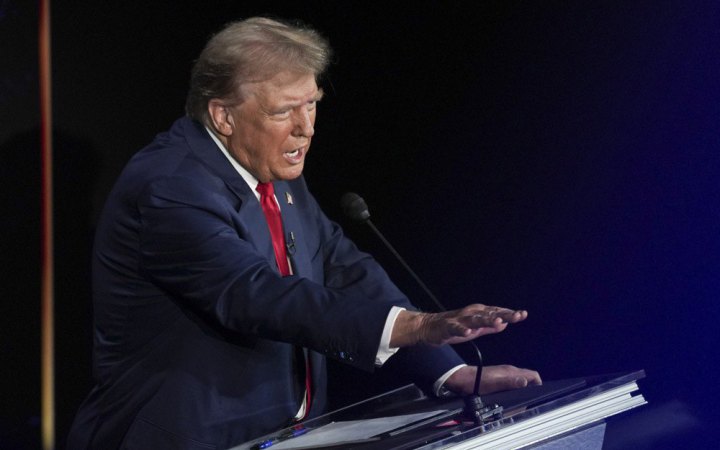Advisers close to US presidential election frontrunner Donald Trump have four versions of freezing the war in Ukraine, the Wall Street Journal reports. Trump, who has promised to end the war, now has to choose between these proposals, each of which is a sharp departure from President Joe Biden's policy of arming Ukrainians "as long as it takes". To clarify. Commenting on the article, presidential advisor Dmytro Lytvyn said that "the real plans of presidents are hardly ever announced in newspapers. And there are always a lot of Russian propaganda in newspapers".
Trump has previously said that he is capable of bringing both Ukraine and Russia to the negotiating table, but he has never explained how he would do so. He justified this by saying that if he revealed his plan, he would not be able to use it.
"According to allies, Trump did not actually endorse a specific peace plan, including how he would convince Russian President Vladimir Putin and Ukrainian President Volodymyr Zelenskyy to sit down and negotiate. While advisers have offered ideas, it will be up to the president-elect, in consultation with key aides, to decide how to handle the sensitive, high-stakes diplomacy, they said," the article says.
According to the journalists, more traditionally-minded allies will insist on a settlement that will not bring the Russians a major victory. Other advisers, such as the main candidate for the post of Secretary of State, Richard Grenell, may insist on ending the war as soon as possible, even if Ukraine has to make significant concessions.
The versions of the end of the war being developed recommend freezing the war at its current location, i.e. giving back to Russia the territories it has already captured - more than 20%. They also suggest that Ukraine should at least temporarily refuse to join NATO.
One previously unknown idea proposed in Trump's transition office, described in detail by three people, involved a promise by Kyiv not to join NATO for at least 20 years. In exchange, the US would continue to provide Ukraine with the weapons it needs to repel Russian attacks. According to this plan, the front line would be effectively fixed in its current location, and both sides would agree to a "demilitarised zone". It remains unclear who will guard this area, but one adviser said that the peacekeeping force will not include US or UN troops.
A member of Trump's team said the US could provide training for the Ukrainian military, but that Europe should provide the weapons.
"We are not sending American men and women to keep the peace in Ukraine. And we are not paying for it. Get the Poles, Germans, British and French involved," the anonymous source said.
In a way, this option overlaps with the earlier proposal of J.D. Vance, whom Trump chose as his vice president. In September, he said that the "demilitarised zone" should be heavily fortified to make sure that the Russians do not invade again. And Russia, in addition to the seized territory, will receive a guarantee of Ukraine's neutrality.
Earlier this year, Keith Kellogg and Fred Fleitz, who both served in Trump's first White House, presented Trump with a plan to cut off arms aid to Ukraine until Kyiv agrees to peace talks with Russia. Ukraine could still try to regain the lost territory, but would have to do so through diplomatic negotiations.
It is unclear which, if any, of these proposals Trump will support.








